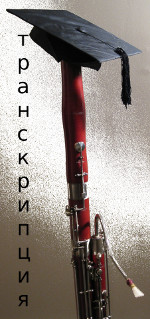Weissenborn Opus 8/2, Study
#49 for advanced bassoon students. Fingerings for Eb5.
Adjustments to the reed for high register playing on the bassoon. Guest
performer Collin Walter. Translated
by Elena Iakovleva. By Terry B. Ewell, Bassoon Digital Professor. BDP#157.
www.2reed.net.
Изучение этюда Nº49
Вайсенборн опус 8/2, этюд №49 для продвинутых студентов фаготистов.
Регулировка трости для игры на высшем регистре фагота. Приглашенный
исполнитель, Collin Walter.Терри Б. Юэлл, Цифровый Профессор Фагота.
Перевод, Елена Яковлева. BDP#157. www.2reed.net.
TUTORIAL Руководство
1. Welcome, this is Terry Ewell. Weissenborn Study #49 expands
the range of the instrument to Eb5. This note, however, is a
problematic pitch on the German system bassoon. It does not articulate
well or respond well to large slurs.
1. Добро пожаловать, это Терри Юэлл. Этюд Вайссенборна № 49
расширяет диапазон инструмента до Миb5. Эта нота, однако, является
проблематичной для немецкой системы фагота. Ее трудно артикулировать и,
в добавок, она не внятно берется на длинных лигах.
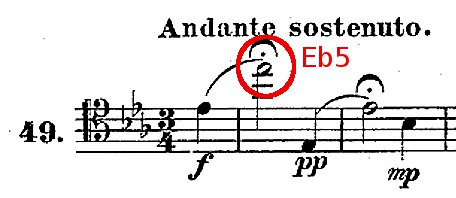
2. Let me leave you with several fingering possibilities for Eb5.
Please be aware that none of them will perform as satisfactorily as
fingerings for D5.
2. Позвольте мне предоставить вам несколько возможных аппликатур для
Миb5. Имейте в виду, что ни одна из них не будет работать так же
хорошо, как аппликатура для Ре 5.
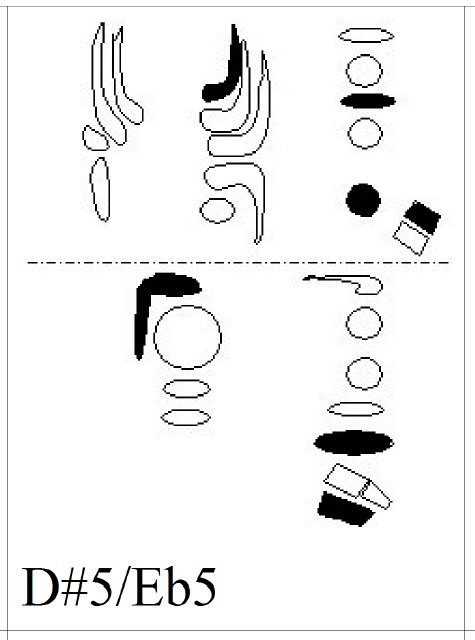
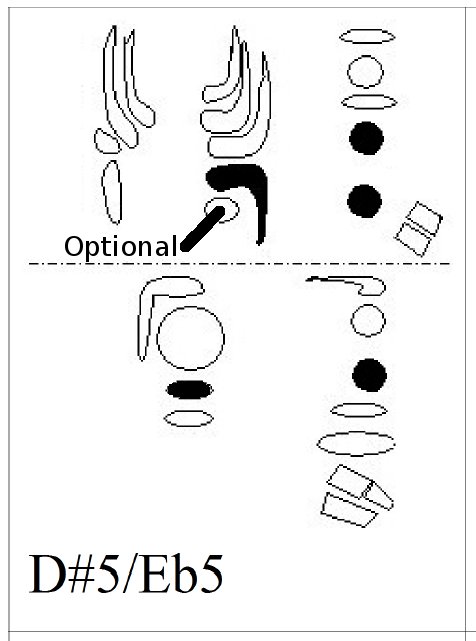
3. You might find it helpful to look at the other suggestions
listed in the Bassoon-Family Fingering Companion.
3. Возможно, вам будет полезно взглянуть на другие предложения,
перечисленные в моей коллекции аппликатур для инструментов семьи
фагота.
http://www.idrs.org/resources/BSNFING/FINGHOME.HTM
4. Here are fingerings for the trills presented in the study:
4. Вот аппликатуры для тех трелей которые появляются в этом этюде:
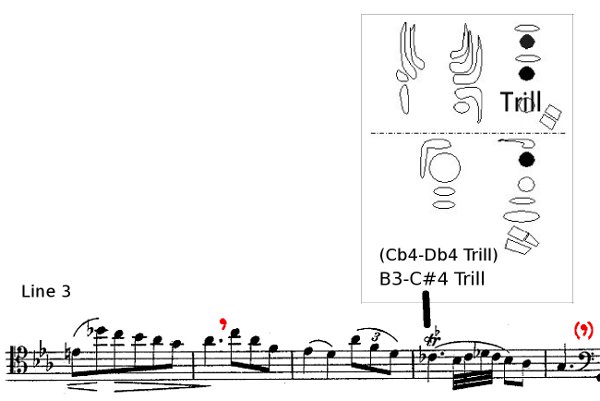
5. I perform the mordents in line 5 with these fingerings:
5. Я играю морденты в 5й строчке вот этими аппликатурами:
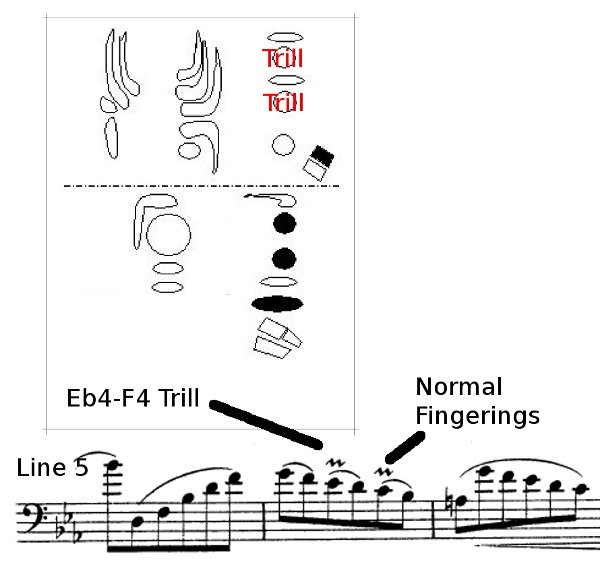
REFLECTION Размышление
6. Most performers find it helpful to use a reed adjusted for the
high register to effectively perform this and the next study. My videos
on reed finishing (BDP# 86-91) present my concepts and suggestions for
adjusting bassoon reeds. I encourage you to study them carefully and
the companion article “A Pedagogy for Finishing Reeds for the
German-System (Heckel-System) Bassoon.” A link to
the revised paper is available here:
http://www.2reed.net/EwellArticles/ReedAdjustingNew.pdf
Full reference: “A Pedagogy for Finishing Reeds for
the German-System (Heckel-System) Bassoon,”
The
Double Reed 23/3 (2000): 99-108.
6. Большинство исполнителей используют трость, специально
отрегулированную для высшего регистра, чтобы эффективно играть этот и
следующей этюд. В моих видео об отделке тростей (BDP # 86-91) вы
найдете мои концепции и предложения. Я призываю вас внимательно изучить
их и сопутствующую статью «Педагогика для отделки тростей для
фагота немецкой системы (системы Хеккеля)». Вот ссылка на эту
статью:
“Una pedagogía para el
acabado de cañas de fagot de Sistema alemán (Sistema
Heckel),” Primera Parte, Revista AFOES no.6 (2017): 34-40. This
is a translation of an updated version of “A Pedagogy for
Finishing Reeds for the German-System (Heckel-System) Bassoon,”
The Double Reed 23/3 (2000): 99-108.
“Una pedagogía para el
acabado de cañas de fagot de Sistema alemán (Sistema
Heckel),” Secunda Parte, Revista AFOES no.7 (2018): 56-60. This
is a translation of the second part of an updated version of “A
Pedagogy for Finishing Reeds for the German-System (Heckel-System)
Bassoon,” The Double Reed 23/3 (2000): 99-108.
7. Smaller reeds favor higher pitches. This is why an oboe reed
is smaller than a bassoon reed, for instance. Creating a smaller
bassoon reed will aid the higher notes. You can shorten the blade by
cutting the tip.
7. Меньшие трости способствуют игре более высоких нот. По этому,
например, трости гобоя меньше по размеру чем трости фагота. Уменьшать
трости фагота поможет более высоким нотам. Вы можете укоротить трость,
обрезая ей кончик.
8. The poor man’s way to cut the tip is to use
scissors. The traditional way to cut the tip is to use a knife and
cutting block. Use a different knife than the one you use for scraping,
because cutting the reed tip will dull the knife.
8. Кончик можно бы обрезать ножницами. Но традиционный способ -
делать это ножом на доске. Только не берите для этого тот нож, которым
вы скоблите трости, потому что он скорее всего затупится.
9. You could also narrow the blade.
9. Вы также можете сузить лопатку.
10. Also a narrow throat helps the high register.
10. Узкое горло на трости, тоже помогает верхнему регистру.
11. In addition, rounding the first and second wires provides more
tension in the blade and aids with the higher harmonics and the higher
notes on the instrument.
11. Кроме того, закругление первой и второй проволоки обеспечивает
большее натяжение лопатки. Это помогает с высшими гармониками и
облегчает игру высоких нот на инструменте.
12. A high note reed also features a greater heart to wings ratio
and a greater spine to rail ratio. Concepts of these ratios are
detailed in my paper.
12. Трость для игры на высоких регистрах также имеет большую долю
ядра по отношению к венчику, и большую долю спинки по отношению к
бокам. Концепции этих соотношений подробно изложены в моей
статье.
13. Depending on the style of your normal bassoon reed, you may
not need to make all of the adjustments given above. Just two
adjustments may be all that is required for you.
13. В зависимости от стиля вашей обычной трости для фагота вам может
не понадобится сделать все эти изменения. Всего две корректировки могут
оказаться вам достаточны.
